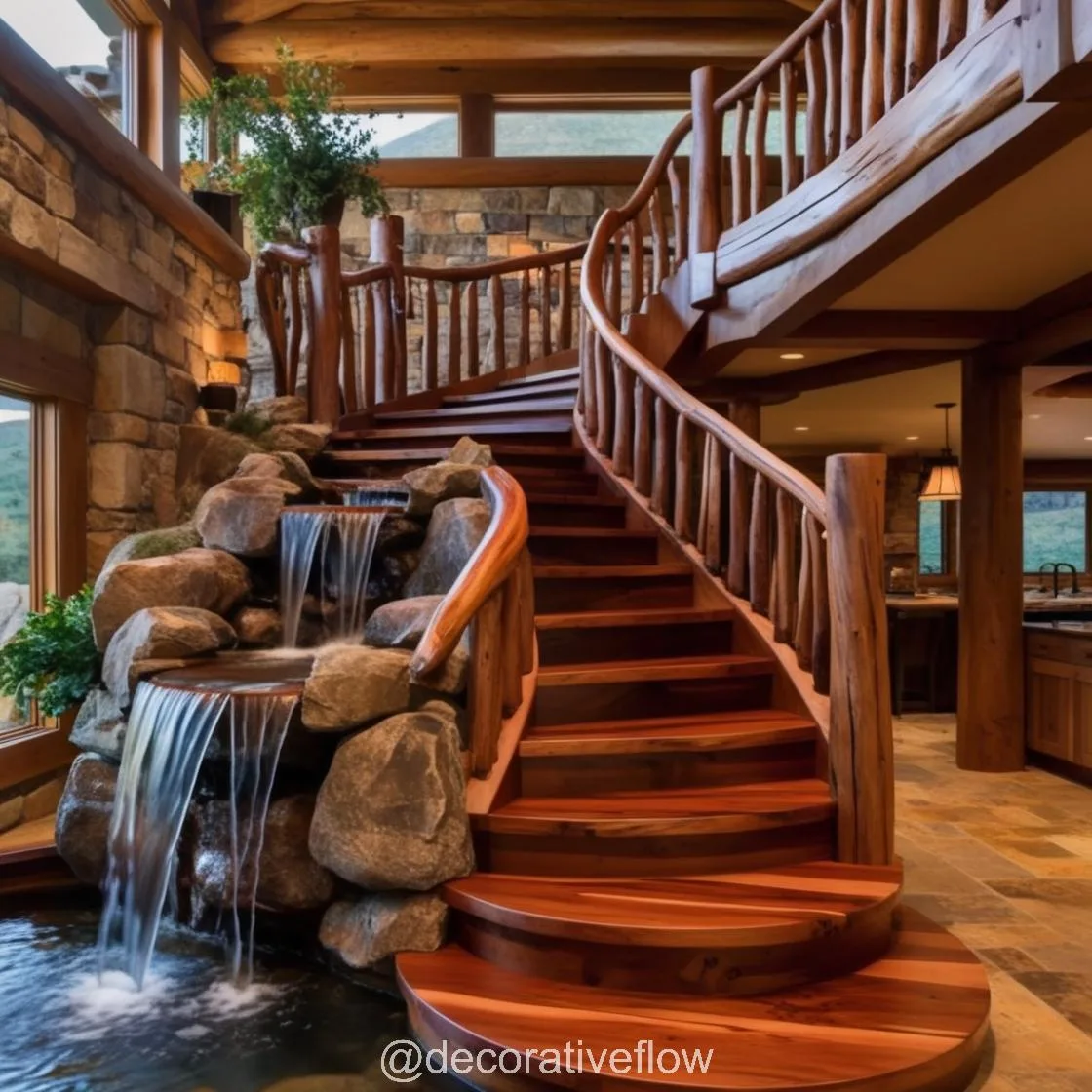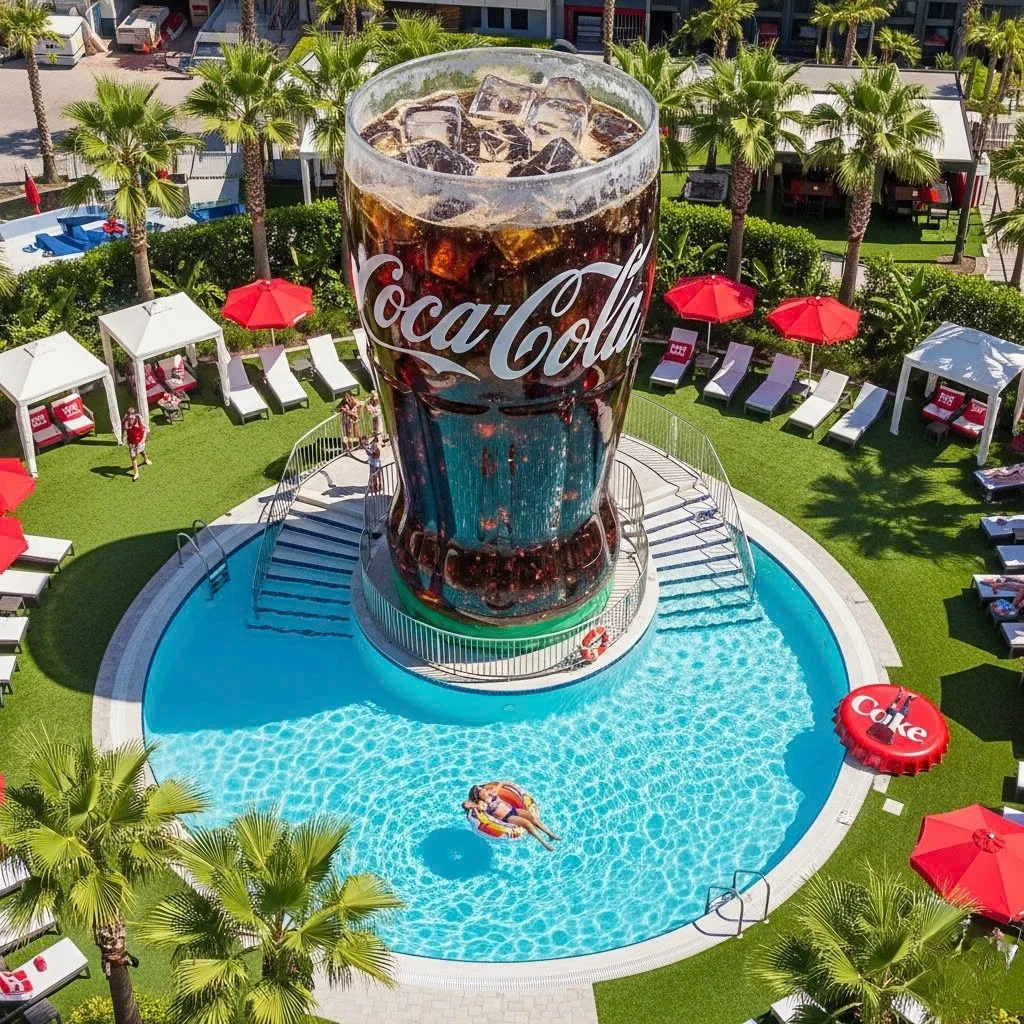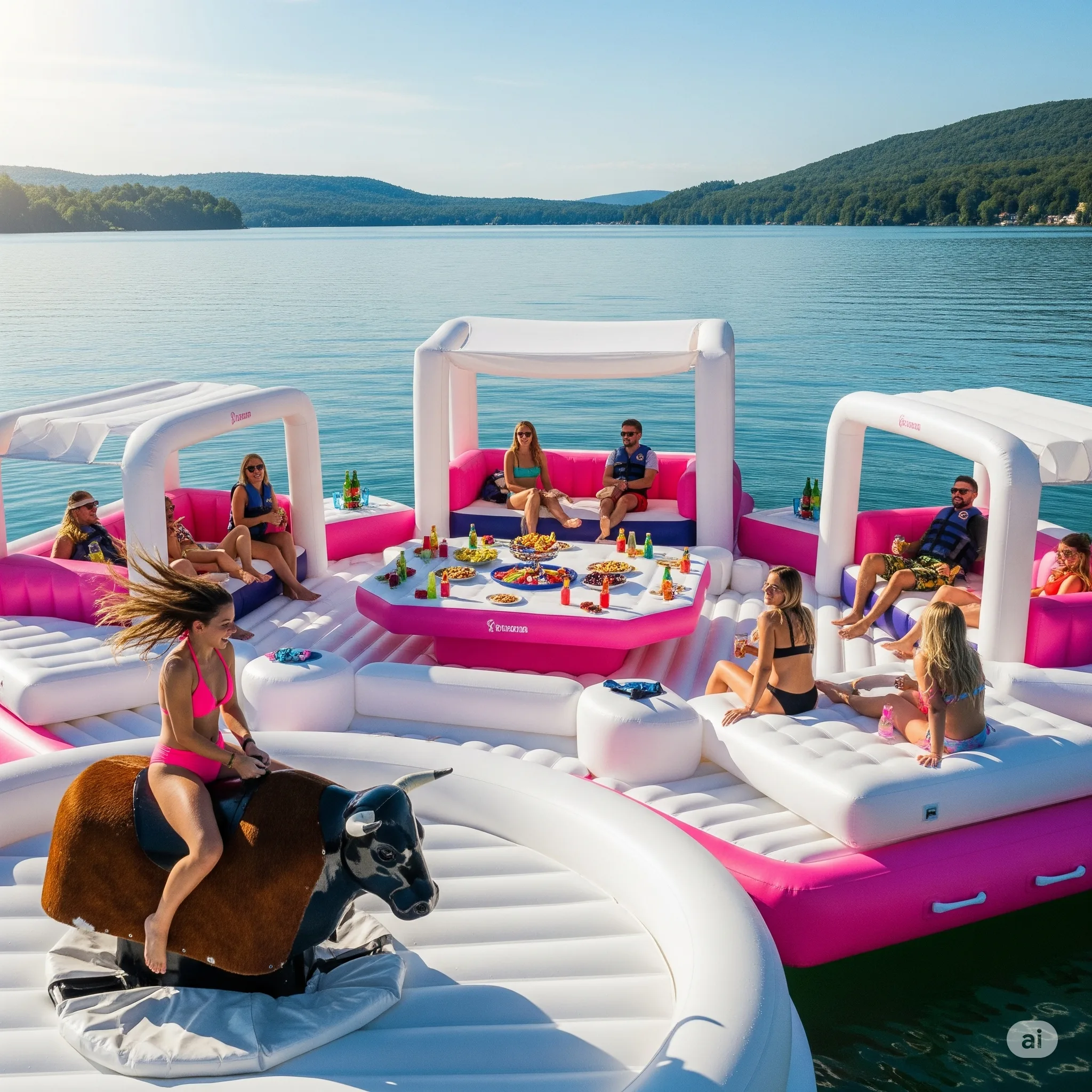In the world of home design, creativity and innovation are paramount in creating spaces that not only serve functional purposes but also elevate the living experience. One striking trend that marries aesthetics with nature-inspired elements is the Waterfall Staircase. More than just a structural feature, the Waterfall Staircase embodies the elegance, tranquility, and natural beauty of cascading water, creating a unique, immersive experience for those who encounter it. From the gentle flow of its design to its serene, fluid effect, the Waterfall Staircase transforms a traditional stairway into an awe-inspiring focal point of the home.

As architecture continues to evolve, the incorporation of natural themes into structural elements not only beautifies spaces but also connects inhabitants with nature, even indoors. This article explores how a Waterfall Staircase brings this vision to life, its design elements, the materials that best complement it, and the impact it can have on modern home design. Join us as we dive deep into the art and essence of Waterfall Staircases and how they elevate the harmony between architecture and nature in breathtaking home design.
Contents
- 0.1 1. The Essence of a Waterfall Staircase: Beauty in Motion
- 0.2 2. Materials Matter: Choosing the Right Components for a Waterfall Effect
- 0.3 3. Crafting Serenity: The Role of Design in Creating a Soothing Environment
- 0.4 4. The Impact of a Waterfall Staircase on Modern Home Design
- 0.5 5. Practical Considerations and Design Challenges
- 1 Conclusion
1. The Essence of a Waterfall Staircase: Beauty in Motion
Waterfall Staircases are designed to mimic the fluidity and grace of cascading water. Unlike traditional staircases, which are often rigid in structure, a Waterfall Staircase flows seamlessly from one level to the next, creating a continuous, almost sculptural element within a home. This “flowing” effect gives an impression of movement, even in a static structure, and brings a calming presence that feels akin to watching a natural waterfall.
The Waterfall Staircase can embody various styles, from minimalistic to grandiose, depending on the design choices. In some cases, actual water features are incorporated, allowing water to flow alongside the steps to create an authentic waterfall effect. However, even without actual water, the choice of materials, curves, and lighting can create a similar sensation of tranquility and grace.
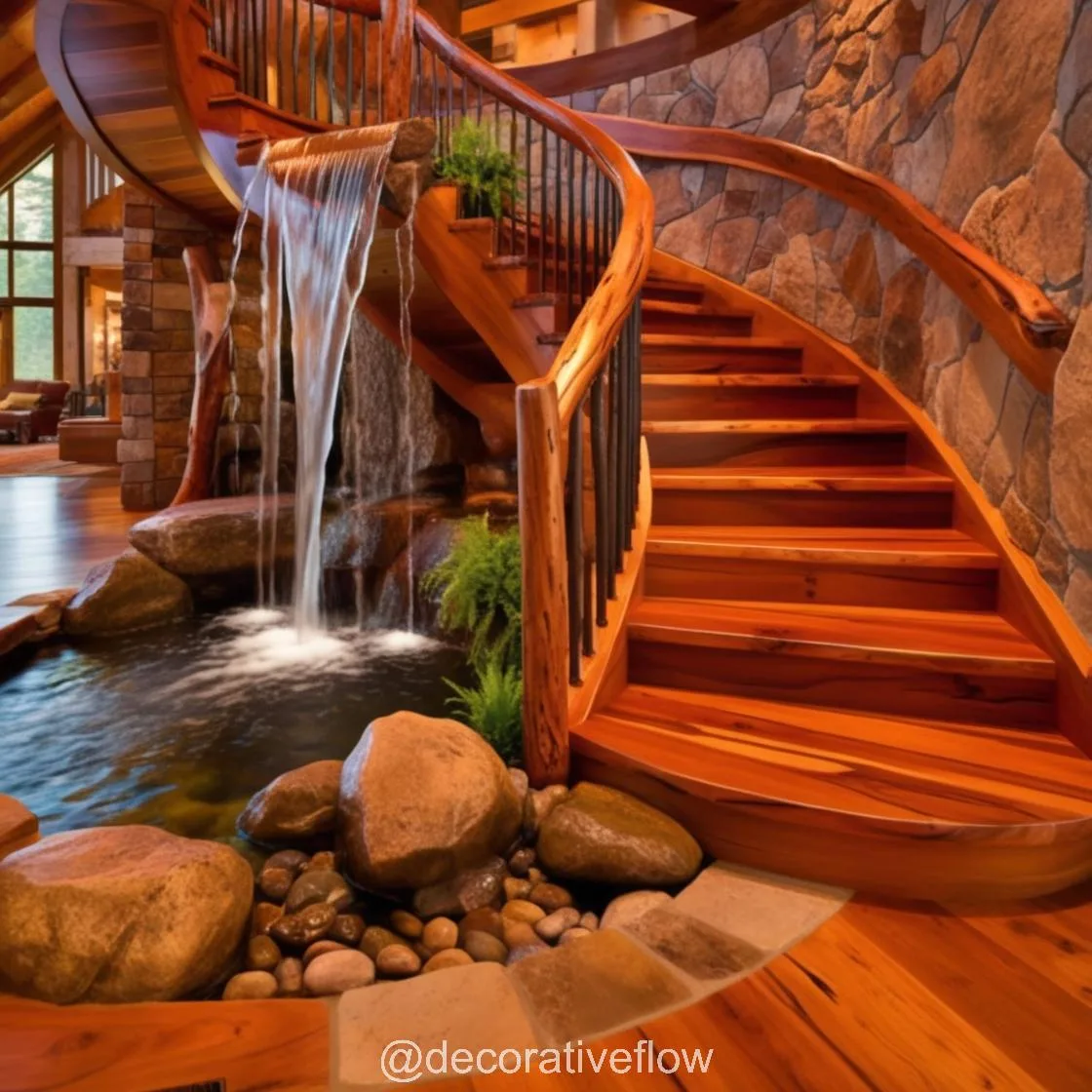
2. Materials Matter: Choosing the Right Components for a Waterfall Effect
To capture the essence of a waterfall, the materials used in creating a Waterfall Staircase are of paramount importance. Each material contributes to the visual effect, ambiance, and flow, all of which define the staircase’s overall impact.
- Glass and Metal: For a modern and sleek Waterfall Staircase, glass railings and metallic accents can give a sense of openness and continuity. Transparent glass railings enhance the flow, letting light pass through and creating a floating effect that complements the waterfall theme. When combined with polished metal handrails or accents, the staircase appears fluid and elegant.
- Natural Stone: To channel a truly natural waterfall look, materials such as marble, granite, or slate are often selected. Natural stone provides a raw, earthy aesthetic that closely resembles rocks and stones found near real waterfalls. When used for the steps or side accents, it brings a touch of nature indoors, connecting inhabitants to the outdoors.
- Wood: For a more organic and warm atmosphere, wood can be an ideal choice. It brings in earthy tones and can create a soft, comforting aesthetic. The grain of the wood also adds texture, emulating the variations seen in natural landscapes. When combined with subtle lighting, wood can give a rich, flowing look that resembles a cascading forest waterfall.
- Water Features and Lighting: Some designs incorporate actual water flowing along the side of the staircase or underneath transparent steps. LED lighting is also key, as it can illuminate the staircase at night, adding a soft glow that mimics the shimmer of light on flowing water. These additional elements make the Waterfall Staircase a multi-sensory experience.
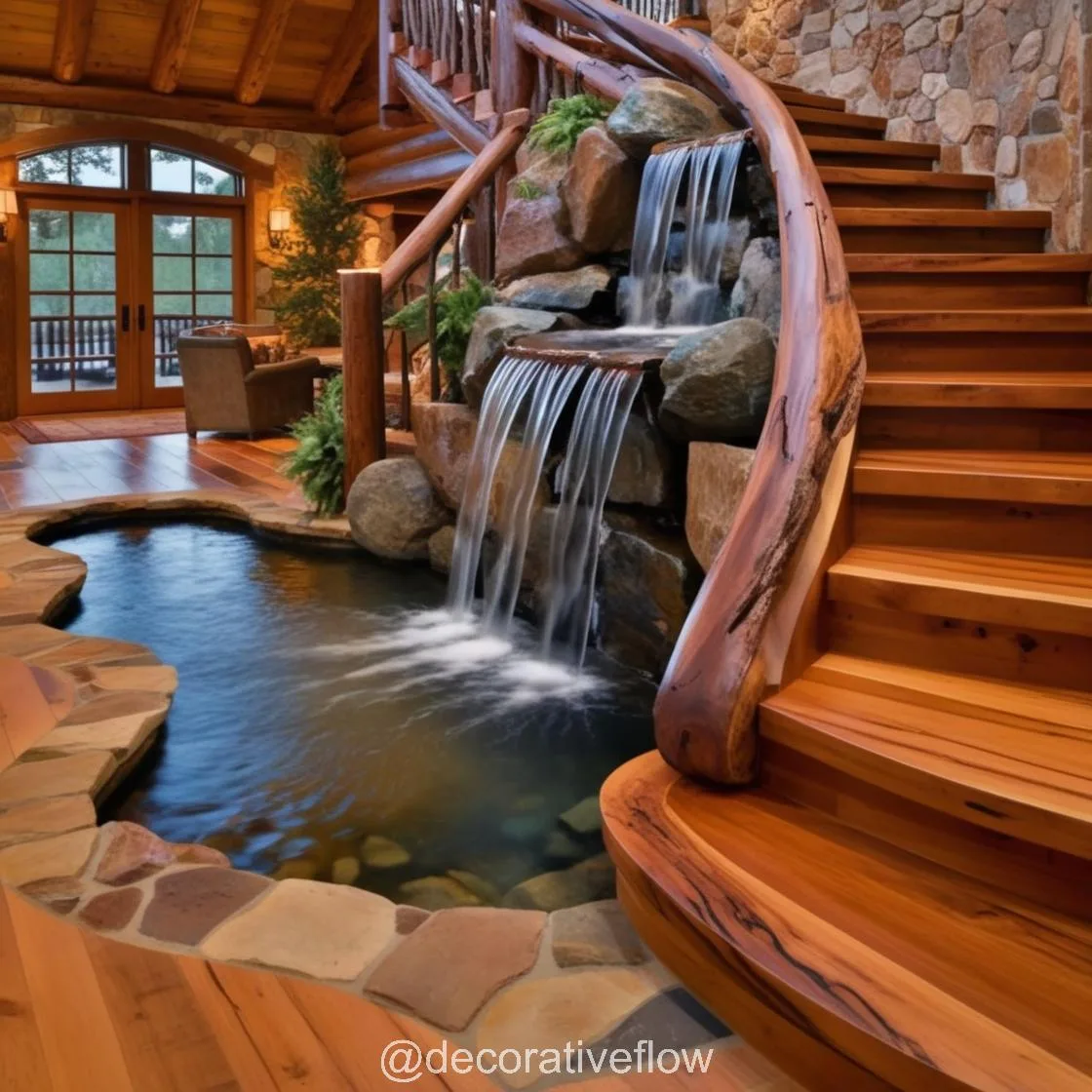
3. Crafting Serenity: The Role of Design in Creating a Soothing Environment
Beyond its structural beauty, a Waterfall Staircase enhances the atmosphere of a home, infusing it with a sense of calm and balance. The design itself brings peace, making it an ideal feature for spaces focused on relaxation, meditation, or simply unwinding after a long day. Here are a few ways the Waterfall Staircase accomplishes this:
- Gentle Curves and Soft Lines: The smooth, flowing lines of the staircase evoke the tranquil appearance of water moving over stones. Unlike sharp, straight staircases that demand attention, a Waterfall Staircase invites onlookers to let their gaze travel along its curves, naturally creating a more relaxed environment.
- Open Concept Designs: Waterfall Staircases are typically found in open-concept layouts, where they can be viewed from multiple angles. This openness invites natural light to play on the steps, creating dynamic reflections and shadows that change throughout the day. As a result, the staircase becomes a living artwork, part of the home’s daily rhythm.
- Integration with Surrounding Décor: A Waterfall Staircase is often complemented by indoor greenery, water features, or natural textures like stone walls and wooden beams. This creates a seamless blend of architecture and natural elements, enhancing the calming atmosphere. Additionally, placing the staircase near large windows that offer views of outdoor landscapes helps blur the boundaries between inside and outside spaces.
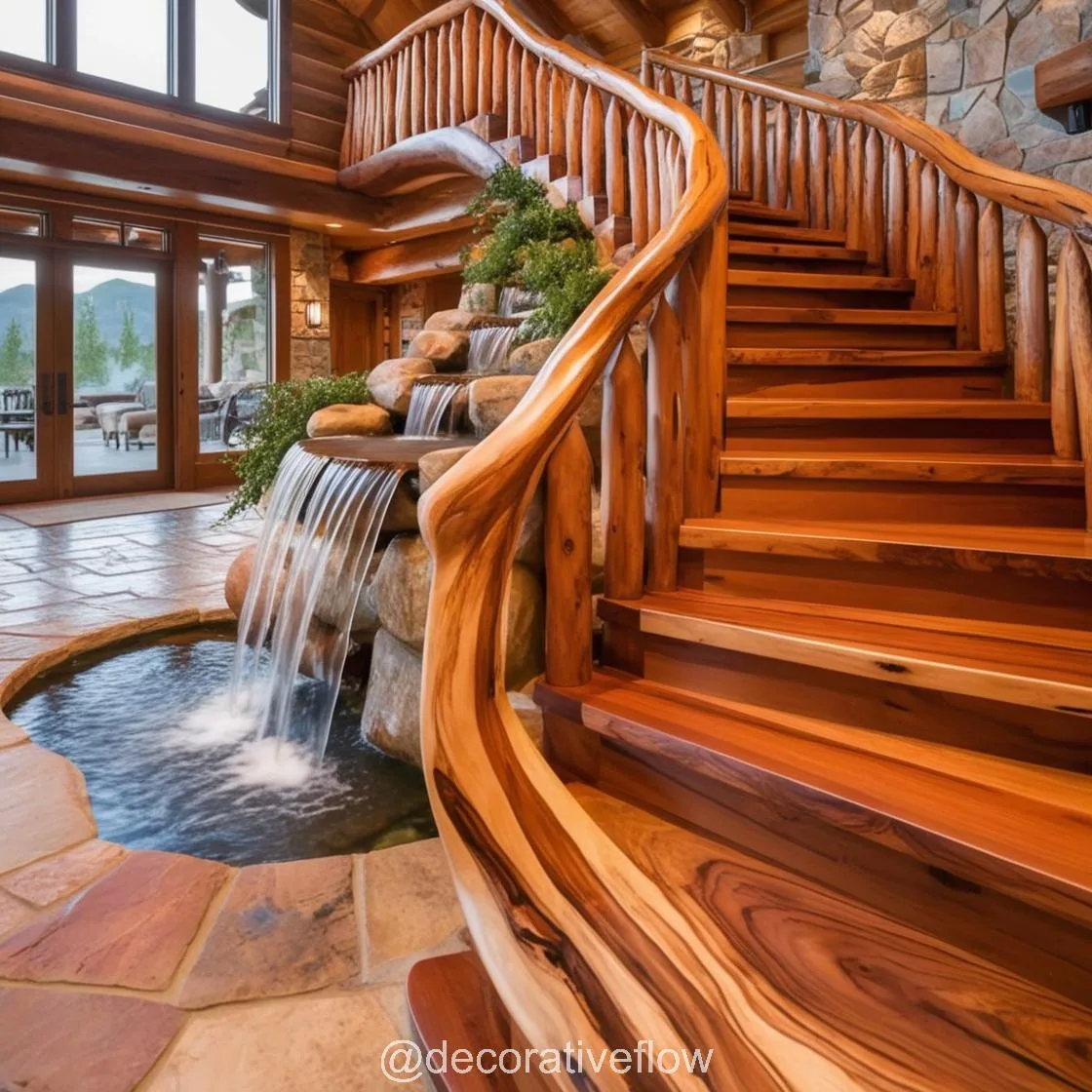
4. The Impact of a Waterfall Staircase on Modern Home Design
In modern architecture, designers strive to create homes that are not only aesthetically pleasing but also promote well-being and harmony with the environment. The Waterfall Staircase embodies this philosophy by being a unifying element that encourages mindfulness and relaxation. Here’s how it has influenced contemporary design trends:
- Sustainable and Eco-Friendly Design: Many homeowners and architects today emphasize sustainability, opting for designs that reflect natural beauty while respecting the environment. A Waterfall Staircase, when constructed with sustainable materials and energy-efficient lighting, aligns with eco-friendly design principles. The use of natural stone, reclaimed wood, or recycled glass, for instance, allows the staircase to be both beautiful and environmentally responsible.
- Biophilic Design and Nature-Inspired Interiors: The Waterfall Staircase is a prime example of biophilic design, which seeks to reconnect people with nature. By integrating natural forms, textures, and materials, it offers a sensory experience that brings the outdoors inside, improving occupants’ mental and emotional well-being. This staircase style also complements other nature-inspired elements like vertical gardens, indoor ponds, and extensive use of natural light.
- Elevating the Luxury of Interiors: The Waterfall Staircase adds an air of sophistication and exclusivity to a home, making it a popular choice for luxury interiors. Its unique shape and artistic appeal elevate the ambiance, creating a “wow” factor that is both stylish and serene. It becomes not just a functional part of the house, but a statement piece that speaks to refined taste and a deep appreciation for art in everyday spaces.
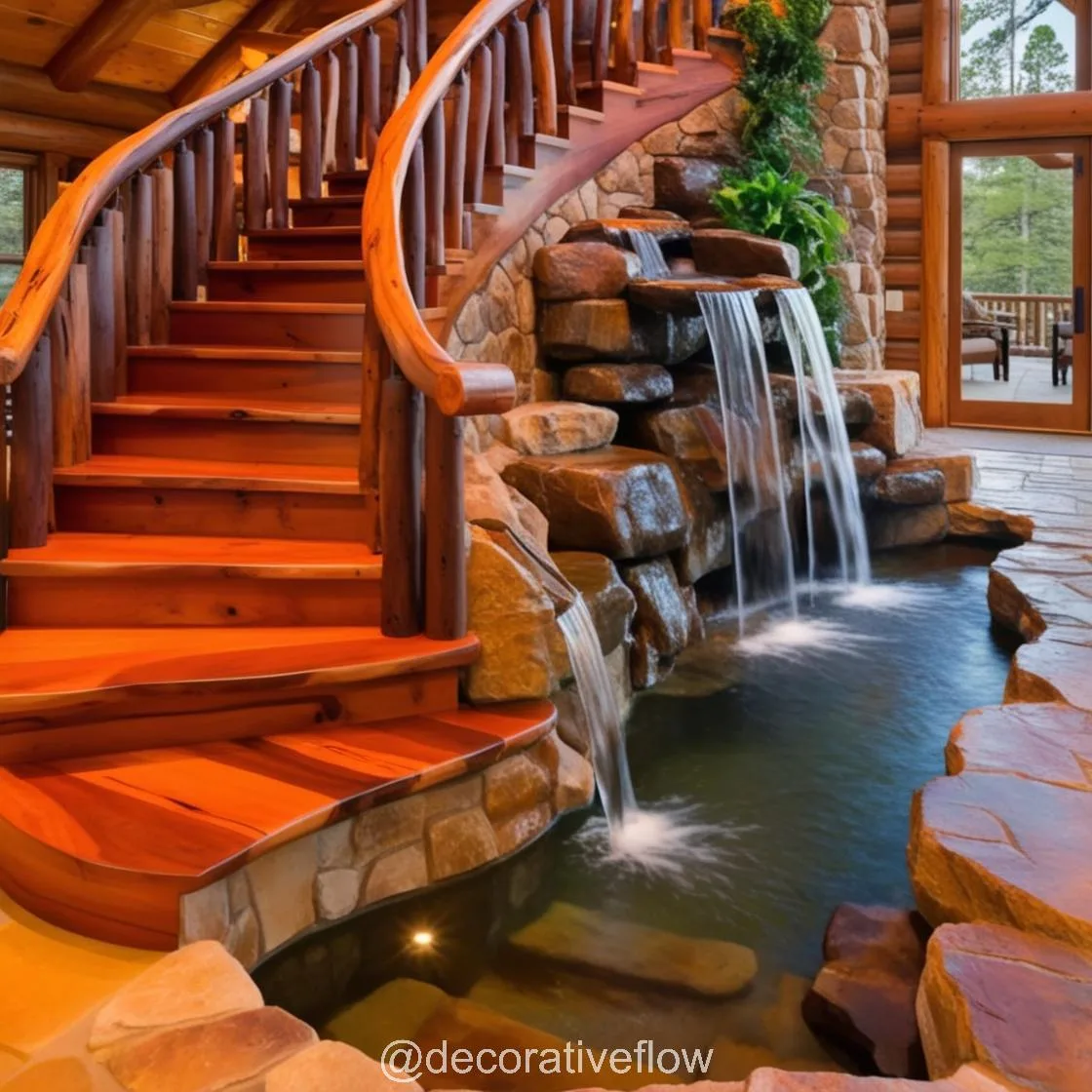
5. Practical Considerations and Design Challenges
While the Waterfall Staircase is undoubtedly stunning, it requires careful planning and consideration to ensure it fits harmoniously within the home. Factors such as safety, maintenance, and space allocation are crucial in the design process.
- Safety: Since many Waterfall Staircases incorporate glass and polished stone, slip resistance and railing stability are vital. Anti-slip treatments, secure handrails, and thoughtful placement of steps ensure that the staircase is both safe and functional. Additionally, some designs feature textured surfaces or grooves in the steps to reduce slipping risks without compromising aesthetics.
- Space Optimization: Waterfall Staircases often require more space than traditional staircases due to their curves and openness. Ensuring there is ample room for both the staircase and surrounding walkways is essential to maintain the flow and beauty of the design. If space is limited, designers may opt for compact versions of the Waterfall Staircase that preserve its aesthetic essence without overwhelming the room.
- Maintenance Needs: Depending on the materials used, regular cleaning and maintenance may be necessary to preserve the staircase’s beauty. Glass panels need to be cleaned frequently to avoid smudges, while natural stone requires special sealants to protect against stains. Wood elements may also require periodic polishing to maintain their warm, lustrous look.
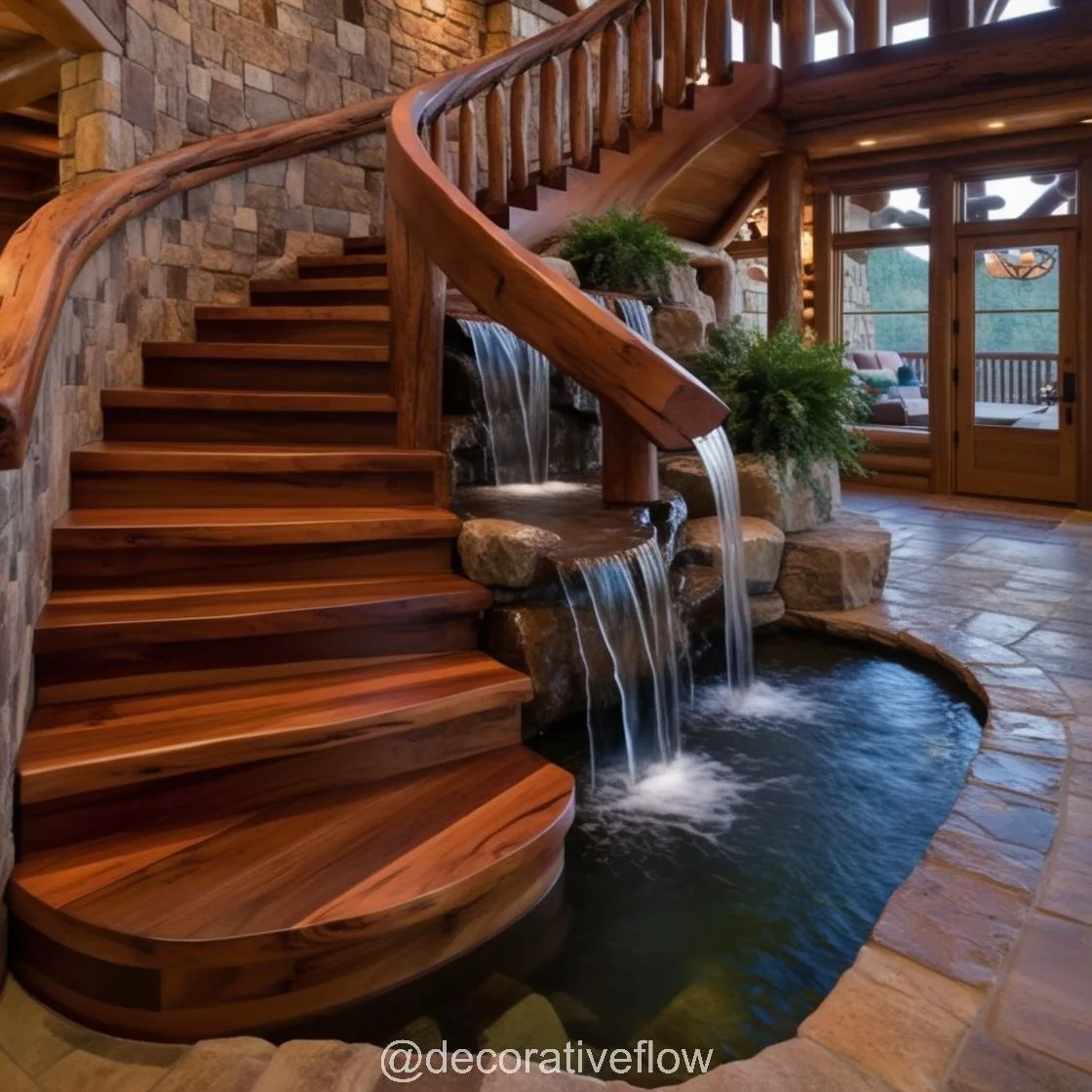
Conclusion
The Waterfall Staircase is a perfect synthesis of architectural creativity and the allure of the natural world. Its elegance, movement, and serenity offer more than just functionality; they create a transformative experience that reshapes the way we perceive our living spaces. Whether in a minimalist urban loft or a grand countryside villa, this staircase brings an element of tranquility and artistic depth, bridging the gap between indoor design and nature’s organic beauty.
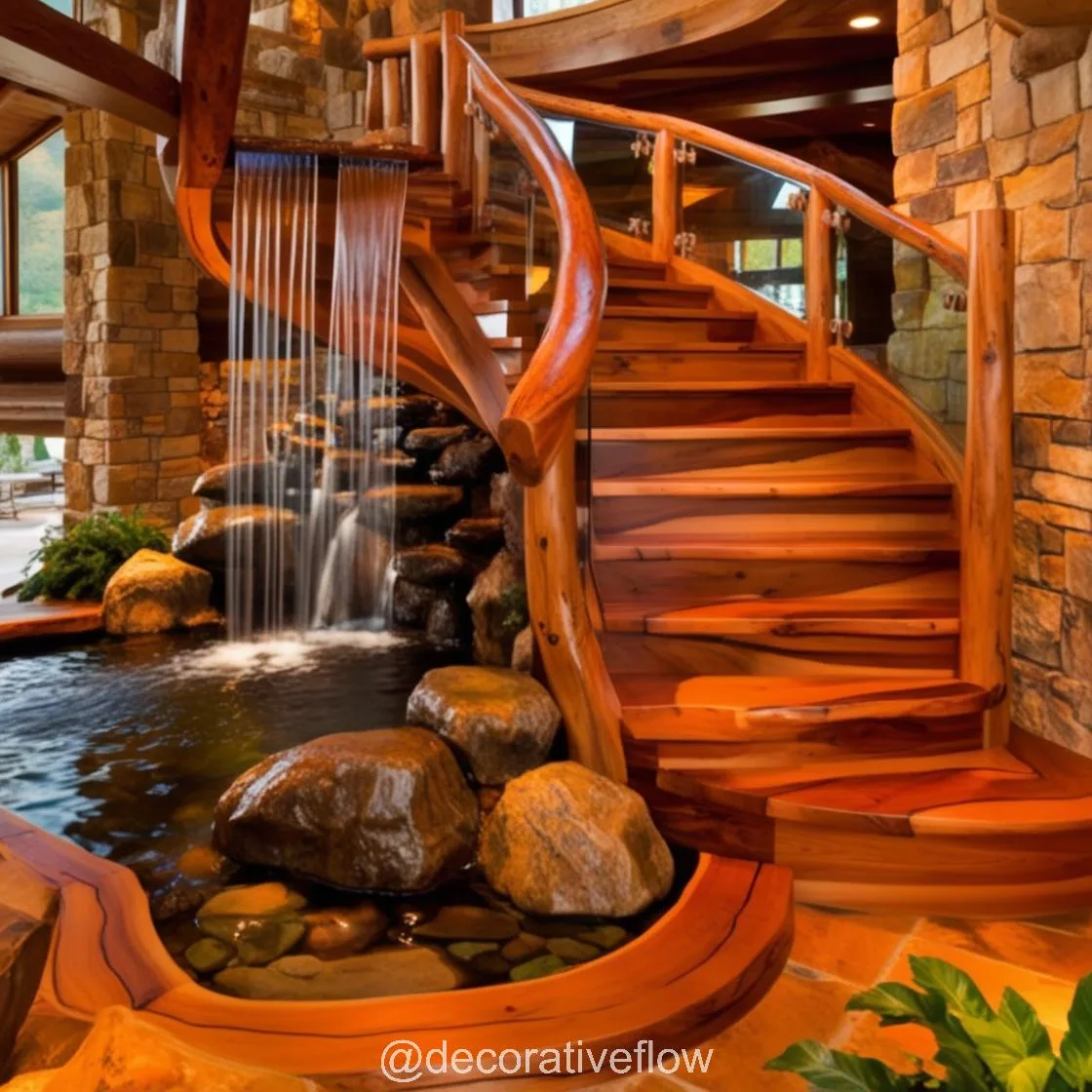
From the thoughtful selection of materials to the gentle curves that emulate a flowing cascade, the Waterfall Staircase brings to life a vision that is both luxurious and nurturing. It allows homeowners to embrace a nature-inspired sanctuary within their own walls, offering a daily reminder of nature’s beauty and grace. In a fast-paced world, the Waterfall Staircase stands as a testament to the power of architecture to inspire, relax, and rejuvenate the human spirit. Embracing this design not only transforms a home’s interior but also enriches the lives of those who inhabit it, making it a truly breathtaking addition to any home.

